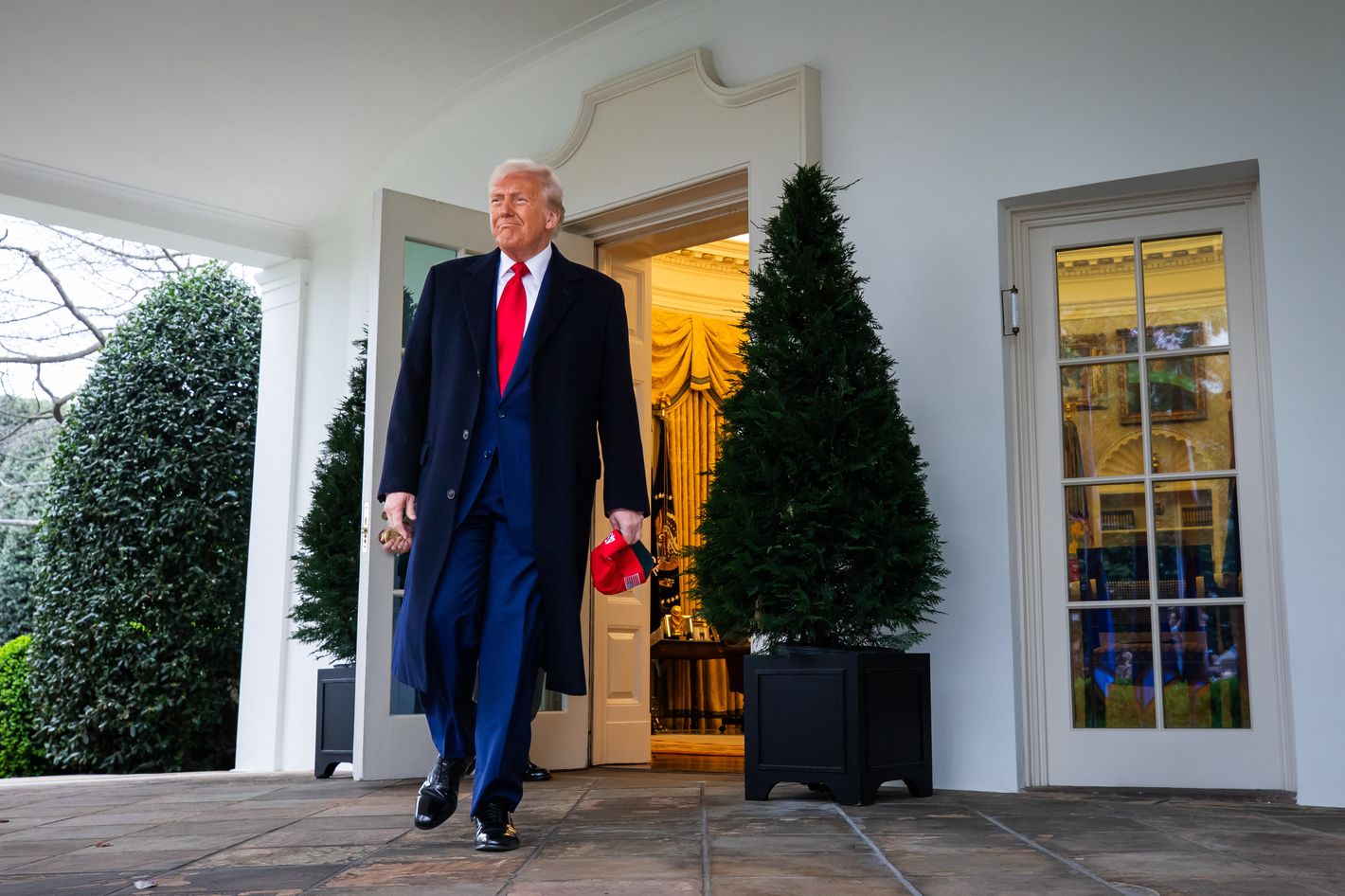Photo: Jim Lo Scalzo/Bloomberg/ Getty Images
Give Donald Trump some credit: He is following through, absolutely, on a campaign promise.
While few Americans imagined that electing Trump again would make Elon Musk a de facto president, tasked with eviscerating the federal bureaucracy, it was no secret that tariffs would be on the menu if Trump returned to the White House. Tariffs and trade deficits have been a Trump obsession for decades. He could be heard talking them up in the 1980s and 1990s, and he has long romanticized a protectionist economy.
And while Trump’s “Liberation Day” tariffs are unnecessarily punitive and ultimately counterproductive in an inflationary environment, not all of them can be dismissed out of hand. It is true that globalization and free-trade agreements crippled onetime industrial powerhouses in the Northeast and Midwest. The white and Black working classes were punished in cities like Gary and Youngstown and Detroit as manufacturers fled the country and cheap, foreign-produced clothing, toys, and automobiles flooded the market. Joe Biden’s industrial policy targeted China for tariffs on electric vehicles and solar panels, and there are plenty of reasons for Trump to continue or even stiffen tariffs on our greatest geopolitical rival. It is true, as his Treasury secretary, Scott Bessent, recently said, that the American Dream is not merely “access to cheap goods.” The American worker shouldn’t suffer so another export champion overseas can flourish.
Of course, Trump is Trump, and there is no subtlety to his latest tariffs and no sense of proportion. Trump announced a 10 percent universal tariff on all goods — barring certain exemptions — imported into the U.S., beginning April 5. Goods from China were hit with an enormous tariff rate of 54 percent. Japan was taxed at 24 percent, Europe at 20 percent, and there are many more “reciprocal” tariffs, which will take effect on April 9. This morning, a 25 percent tariff on all automobile imports kicked in. Canada and Mexico, already targeted for tariffs, were not a focus of the so-called Liberation Day.
Various analysts rate these tariffs as among the very highest in American history, surpassing the Smoot-Hawley Tariff Act of 1930 and rivaling the protectionist regimes of the 1890s. An open question remains how long they will last — or if most of them represent yet another Trump negotiating tactic. Bessent seemed to suggest that the tariffs could be provisional. “One of the messages that I’d like to get out tonight is everybody sit back; take a deep breath; don’t immediately retaliate. Let’s see where this goes,” he said, according to CNN. “Because if you retaliate, that’s how we get escalation.”
If the tariffs hold, trade wars are coming and life is going to get more expensive, whether American manufacturing glory is restored or not. Inflation could increase, and the economy may, in the short term, tip toward a recession. For the market-conscious Trump, it will be grim times on Wall Street, which wrongly gambled that Trump wasn’t serious about levying heavy tariffs on America’s trading partners. Investors are bound to get more skittish. The postelection stock-market gains have already been wiped out.
This is the real problem for Trump. His calling card has always been the economy. As Democrats, throughout his first term, fulminated about the state of the Republic, Trump could point to low inflation, low interest rates, and a strong stock market. During Biden’s presidency, Americans felt nostalgia for the pre-pandemic 2010s, and that was Trump’s time in the sun. As much as they may have found his conduct disconcerting, voters believed he could be an adequate steward of the economy. Individual presidents can’t wholly dictate economic conditions, but it’s inarguable that Trump, less radicalized than he is today, did relatively little to destabilize the 2010s’s financial environment. Tariffs were reasonable, the federal bureaucracy was preserved, and the GOP-run Congress failed in its politically toxic bid to destroy the Affordable Care Act.
Surveys already show Trump posting poorer numbers on the economy. His strong suit is gone, and it’s probably not coming back — not with tariffs, DOGE, or attempts to gut Medicaid. There is virtually nothing Trump is doing in his second term to improve the everyday reality of working-class people. Mass layoffs of federal employees merely punish those who had stable jobs and make interacting with crucial bureaucracies like the Department of Veterans Affairs all the more challenging. A stiff tariff won’t lower a grocery bill. And if Republicans do follow through on their bid to lower the deficit by slashing Medicaid, which offers health care to some 70 million Americans — plenty of them Republicans in rural areas — the backlash will be severe.
The bloom is already off the MAGA rose. The Wisconsin Supreme Court race was a devastating outcome for the Trump-Musk wing of the party — at this point perhaps its only real wing — and an indication of where we are probably headed. Democrats and independents are furious and ready to vote against Trump-aligned candidates. Had Elise Stefanik not been returned to her district in the North Country, there’s an outside chance that a special election there could have turned a deep-red seat blue. If Trump is serious about bringing back 1930s- or 1890s-style protectionism to America, he should consult a history textbook and find out what happened to the Republican governments that instituted the tariffs. Neither of them survived, with Herbert Hoover, in the teeth of the Great Depression, giving way to Franklin D. Roosevelt and a Democratic majority that wouldn’t be broken for a generation.
Democrats have a long, long way to go to reach their FDR-era heights. But Trump, through his chaos, is helping them along plenty.

